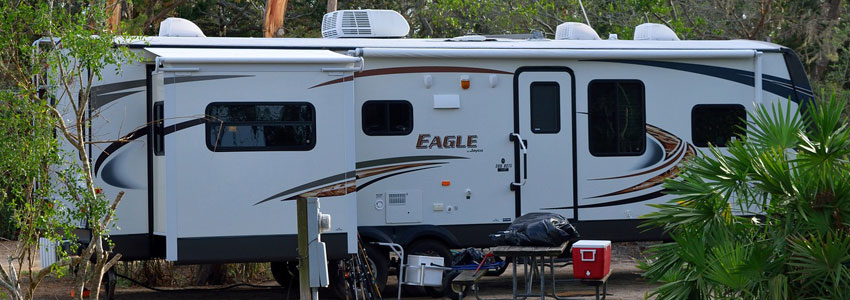What you need to know about Buy To Let Mortgages
Despite recent government initiatives that were predicted to have a negative effect on buy to let activity in the UK, the buy to let market is still very popular with investors. There are more buy to let mortgages available, rental yields are still high and demand has gone up even further.
A buy to let property should be treated as a long term investment given the costs involved in buying the property and ongoing maintenance can be substantial. Risks of buy to let investments include rising interest rates, difficult tenants and problems selling property in a changing market.
It is therefore essential to do your research before making the decision to take out a buy to let mortgage and lenders will want to see evidence of your research to see that your expected rent will more than cover your mortgage payments.
This comprehensive guide to buy to let mortgages will provide you with all the information you need and fully prepare you ahead of speaking to a mortgage adviser and taking your next step to buying a buy to let property.
What is a Buy To Let Mortgage?
A buy to let mortgage (or a btl mortgage) is a mortgage for a property that is being bought specifically to be rented out to tenants. As the purchaser, you won’t be living in the property yourself.
It is a way to make money by charging rent that is more than the monthly mortgage repayments, with the aim of making an additional capital gain when the property is sold. Because a buy to let mortgage is classed as a business transaction and seen as higher risk to the lender, fees and rates are often higher than a standard residential mortgage.
How do Buy To Let Mortgages work?
As with residential mortgages, a financial provider lends you the money to purchase the property over a set term with the loan secured against the property. There are similar choices available to you including fixed rate, variable rate and interest only buy to let mortgages.
You can read more about the types of mortgage products. There are, however, many differences between a buy to let mortgage and a residential mortgage, as outlined below.
How do Buy To Let Mortgages differ to Residential Mortgages?
Buy to let mortgages in the UK are usually interest only (although not always). Interest only mortgages have generally become less popular for residential mortgages since the 2008 financial crisis due to stricter criteria for payment plans by lenders.
However, for buy to let mortgages they are still widely used. Pros and cons of interest only versus repayment buy to let mortgages are explored later in this guide.
Buy to let mortgage lending criteria differs to residential mortgages. So when asking “how much could I borrow on a buy to let“, instead of focusing purely on your salary, you will need to look at potential rental income to ascertain whether you can afford the mortgage.
Mortgage lenders generally apply a rent to interest cover (RTI) calculation and you will need to be able to prove that enough rental income will be generated to cover the monthly mortgage payments.
It is common for lenders to want rental income to be at least 125% of monthly interest payments on the loan but on top of this they may set an ‘assumed interest rate’ for this calculation to account for any future increases.
If it is your first buy to let mortgage, then they are likely to use a combination of rental income and insist that your salary is above a certain minimum. People with larger buy to let portfolios may be assessed differently.
Our handy buyto let calculator will give you a rough idea of how much you could borrow based on an expected rental amount. Remember though, buy to let mortgage criteria differs between lenders and depends on an individual’s situation so seek advice to ascertain your borrowing capability.
A buy to let mortgage is typically riskier for lenders so a buy to let mortgage deposit will often need be greater than for a residential mortgage, typically starting at 25%.
Although you may be having to front a larger amount of money for your buy to let mortgage deposit, mortgage rates will usually be higher when comparing to a residential mortgage.
The more deposit you can pay, the better the interest rates. You can check our current best buy table for buy to let rates.
Set up fees are also usually higher for buy to let mortgages compared with residential mortgages which will need to be paid upfront or possibly added to the loan
Should I take a Repayment or an Interest Only Buy To Let Mortgage?
What is an Interest Only Buy To Let Mortgage?
Interest only buy to let mortgages require you to only pay the interest on the loan each month and not the capital borrowed. Monthly outgoings are therefore lower but you need to have an adequate plan to show the lender that not only will your monthly rental income cover your interest payments, but that you will also be able to pay off the mortgage capital at the end of its term.
Fortunately this is much easier for buy to let as a lender will usually accept a plan to simply sell the property by the end of the mortgage term as you will not be using it as a family home.
What is a Repayment Buy To Let Mortgage?
A buy to let repayment mortgage requires you to pay back the interest on the loan as well as a portion of the capital borrowed each month. The monthly payments are therefore larger than with an interest only mortgage.
Gradually, as more and more of the original loan is paid off, the borrower’s equity increases. At the end of the mortgage term, both the interest and the full amount borrowed are fully paid off and you will own the property outright.
Which type of Buy To Let Mortgage will work best for you?
The type of mortgage you should choose depends largely on what your buy to let objectives are. If you are investing in a buy to let property to generate a regular income and to maximize cash flow, then the interest only buy to let mortgage option might be best.
On the other hand, if you are investing with the long term ambition of having the property an additional retirement income, then a repayment mortgage might be the better option. The same applies if your main aim is to have a fully-owned asset to hand on to beneficiaries at the end of the term.
Interest only mortgages are usually the most popular for landlords and investors who have a sizable portfolio of properties and for those looking to build their portfolio. The interest only option allows the investor to re-gear capital to increase their portfolio size as a long term strategy.
Speak to one of our advisers and we can help with your decision making process.
How to choose a Buy To Let property?

The type of property you choose and its location largely depends on what kind of tenant you are targeting. For example, families will want to live in areas with good schools, in houses with plenty of storage space and a garden. Students will want cheaper accommodation in close proximity to the university and nightlife and young couples will want to be close to good transport links, restaurants and shops.
It is important to get the location and property type right otherwise you may struggle to find suitable tenants at the desired rental amount. When thinking about how to choose a buy to let property it may well be best to seek local expert advice from an estate agent.
They will often be managing other rental properties in the area so will have up to date information on rental values and the will know which properties types are in demand.
Keep in mind that it is harder to secure a mortgage on certain types of properties including new developments, former council properties and flats above commercial premises. If you are considering buying such a property as a buy to let investment, seek advice to find out whether it will be possible to secure a buy to let mortgage.
For further information about buying a property, read our useful home buying guide.
How do I get a buy to let mortgage?
You can read our mortgage process guide to get up to speed with what is required to make an application and talk to one of our advisers to discuss the most suitable buy to let mortgage option for your requirements.
As outlined above, financial providers will want to see evidence of potential rental income and will assess this as part of their property inspection and valuation. It is essential that once you have found the property you want to buy, do as much research as you can into the area, the type of tenants that are likely to want to live there and what the current rental rate is in the area for a comparable property.
Otherwise you may over estimate the likely monthly rental and find the lender unwilling to provide you with the full amount of the loan.
Is it illegal to rent out a house without a Buy To Let Mortgage?
If you already own a property with a residential mortgage deal and are thinking of renting out your home, then you are legally required to inform your mortgage provider about your change in situation.
If it is a short term plan you can try to get ‘Consent to Let‘ from your lender on your existing mortgage deal, rather than changing it to a buy to let mortgage. Rates on residential mortgage deals are generally lower so seeking a Consent to Let should be your first choice.
Not all lenders are flexible however, and you may be required to to change to a buy to let mortgage. You will often find that if consent to let is granted, one stipulation will be that no further borrowing would be issued.
Therefore, it is not usually an option if you are planning to raise further capital from the property. Don’t be tempted not to tell your lender, as you are legally obliged to do so and any breaches to your existing mortgage contract could result in punitive measures or even the lender recalling the loan.
Tax on Buy To Let properties
There are several types of tax that need to paid on Buy To Let properties:
Income Tax – You will be required to pay income tax on profit you earn from the rental income at the rate for your relevant tax band. Be aware that the additional income from your property may push you into the next tax band. The profit is what is left from rental income after allowable expenses have been deducted. Allowable expenses include items such letting agent fees, landlord insurance, utility bills that are paid on behalf of your tenant, legal fees and a portion of maintenance and repair costs.
Stamp duty – Stamp duty tax is payable on all buy to let properties over £40,000 with a 3% surcharge now added to the normal UK stamp duty rates. The tables below show you the new tiered system of working out your buy to let stamp duty rates for England, Wales and Northern Ireland and Land and Buildings Transaction Tax (LBTT) for Scotland. If you want to read more about stamp duty visit our full guide now. Our stamp duty calculator will tell you exactly how much to expect to pay.
Stamp duty for Buy To Let properties in England, Wales and Northern Ireland
| Purchase Price | % to be paid |
|---|---|
| £0 to £40,000 a | 0% |
| £0 to £125,000 b | 3% |
| £125,001 to £250,000 | 5% |
| £250,001 to £925,000 | 8% |
| £925,001 to £1,500,000 | 11% |
| £1,500,001 and over | 15% |
Table notes:
a. If total property price is £40,000 or less.
b. If total property price is over £40,000.
LBTT for Buy To Let properties in Scotland
| Purchase Price | % to be paid |
|---|---|
| £0 to £40,000 a | 0% |
| £0 to £145,000 b | 3% |
| £145,001 to £250,000 | 5% |
| £250,001 to £325,000 | 8% |
| £325,001 to £750,000 | 13% |
| £750,001 and over | 15% |
Table notes:
a. If total property price is £40,000 or less.
b. If total property price is over £40,000.
- Capital gains tax – Capital gains tax may be payable when you sell a buy to let property and make a profit. If you make a loss however, it does not need to be paid. You need to declare the sold buy to let property on your tax return. Tax is charged at 18% or 28% depending on the total capital gains you’ve generated, however, the first £11,100 is tax free ( £22,200 for couples with joint assets). Also, some expenses you’ve incurred can be deducted including; solicitors fees, estate agent fees, advertising costs, property improvement costs (not maintenance costs) and stamp duty.
Currently, you need to pay capital gains tax within 18 months of completing on the purchase. But, from 2019, it will need to be paid within a month.
See the full details of capital gains at Gov.UK.
- Inheritance tax – Your buy to let property is liable for inheritance tax in that it will form part of your estate upon death. If the value of your estate exceeds £325,000 (or up to £650,000 for married couples or civil partners) then a charge will be due. Inheritance tax is charged at 40% on everything above this threshold except when properties pass to a spouse or civil partner. Inheritance tax planning is particularly complex and definitely something that should be discussed with a tax adviser.
Buy To Let with a Limited Company
Setting up a limited company in order to pay less tax on your buy to let property is an option but it is not as straightforward as it seems. The reason it is currently of interest to buy to let property owners is due to the mortgage interest relief restriction brought into effect in April 2017.
Landlords could previously pay tax on net income after deductible expenses including mortgage interest meaning those that paid highest rate of tax (45%) could claim tax relief at the highest rate. But now, new rules are being phased in that mean tax relief can only be reclaimed at the basic rate of income tax (20%). This could greatly affect a landlord with multiple properties.
For individuals who pay the higher rate of income tax, having a buy to let mortgage as a limited company and paying corporation tax at 20% therefore appears appealing. However, it should be noted that a company is a separate legal entity from its owners and net income belongs to the company and not the individual.
You may need to pay tax to access the money earned by your limited company as a dividend. This is after the corporation tax of 20%. If you choose to take the earnings as a salary, your limited company would need to run PAYE which could work out more expensive.
Mortgage interest rates for companies are often higher than for individuals so there is also this potential additional cost to be considered alongside the taxation questions.
Final Considerations
Becoming a landlord is a daunting but exciting task. This guide has provided you with the basic information you need to factor into your decision making process to help you decide whether to invest in the buy to let market and the type of buy to let mortgage that is most likely to suit your requirements.
Rules and regulations change regularly so you will need to keep abreast of property news, market activity and government rules and regulation announcements.
Remember, the buy to let market is very complex and before you make a decision you should seek advice from an expert to determine the type of buy to let mortgage that will work for you. If you want to seek advice speak to an adviser now.





